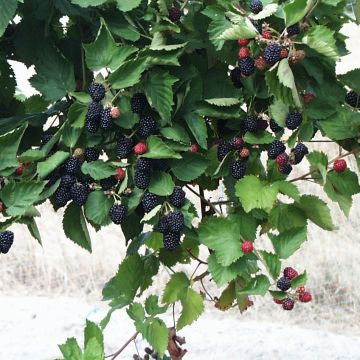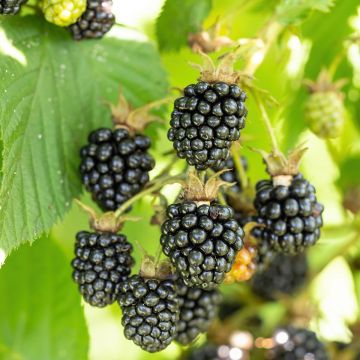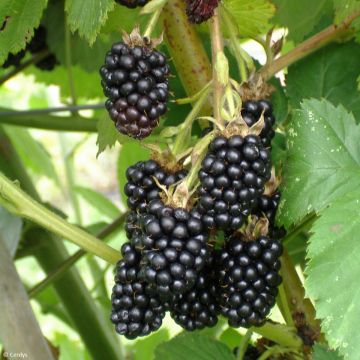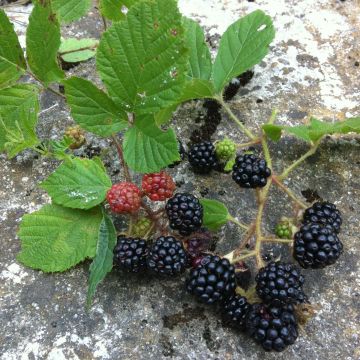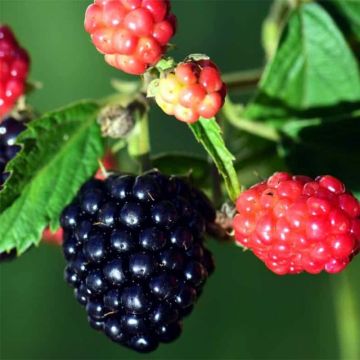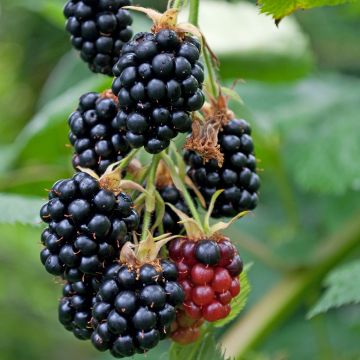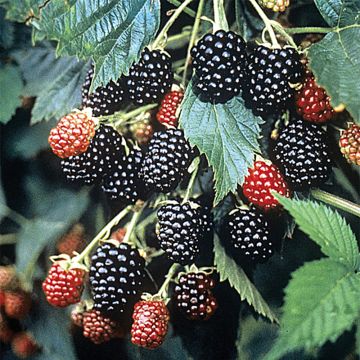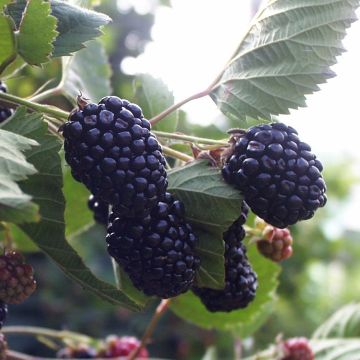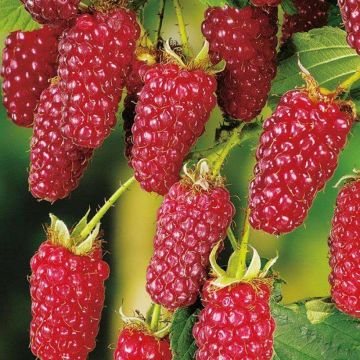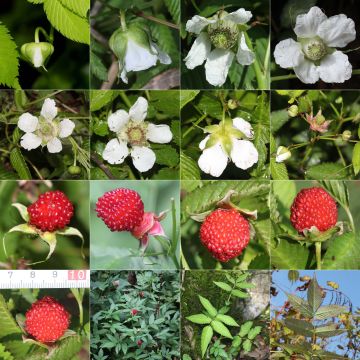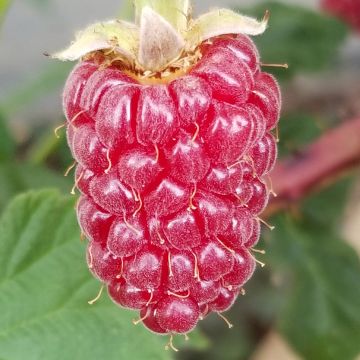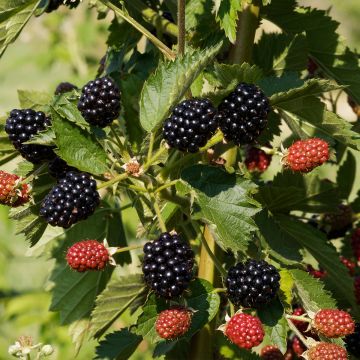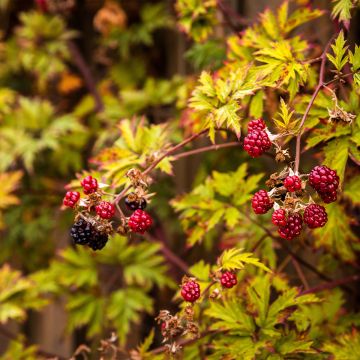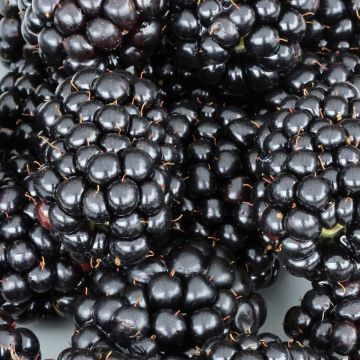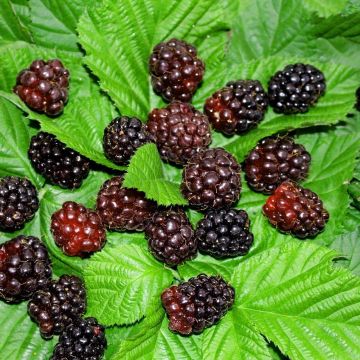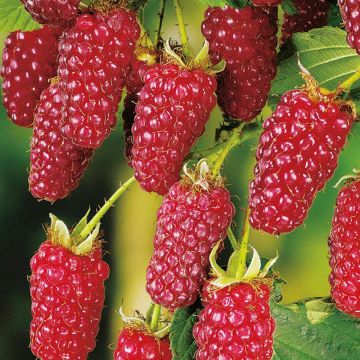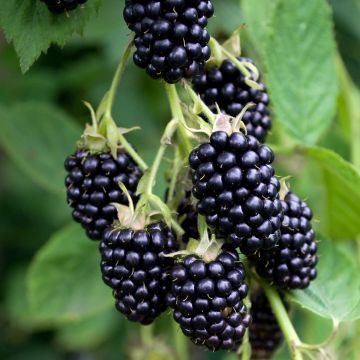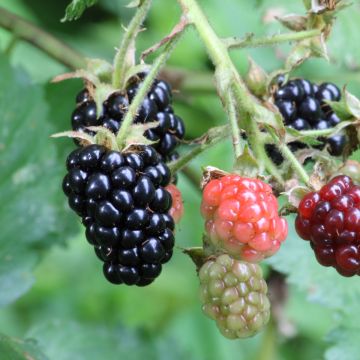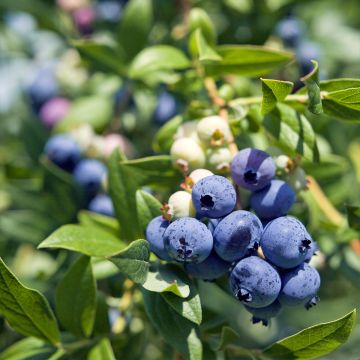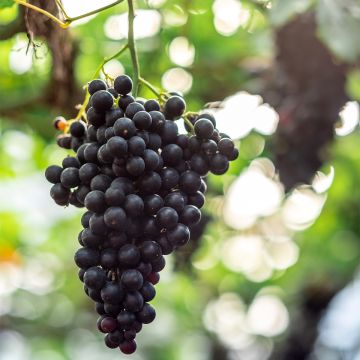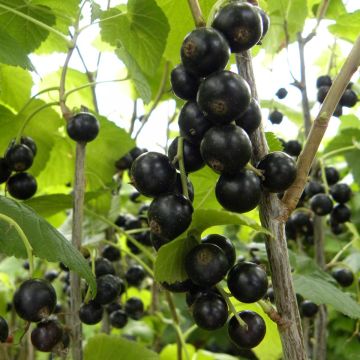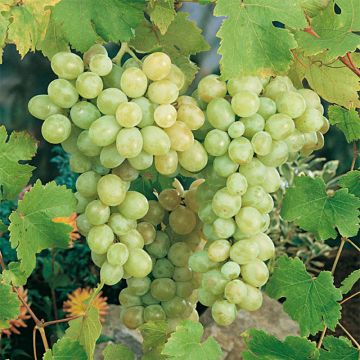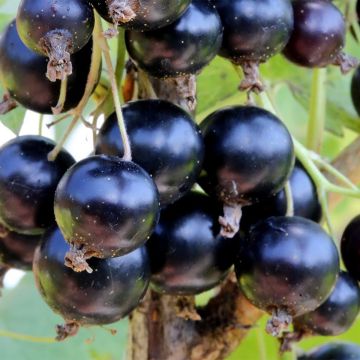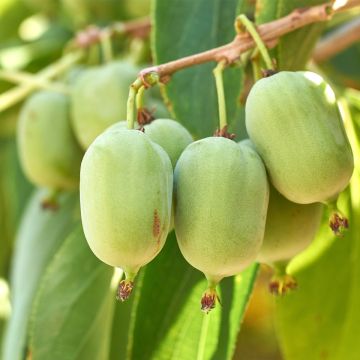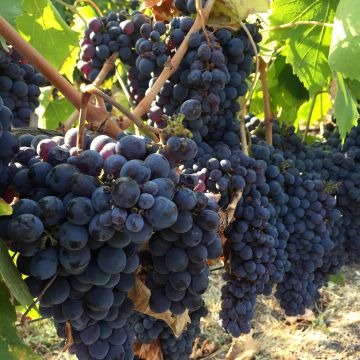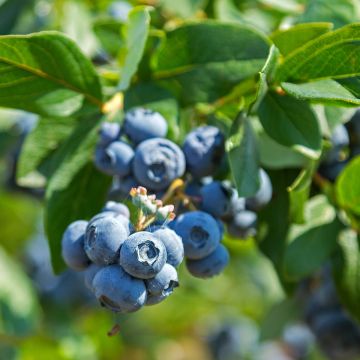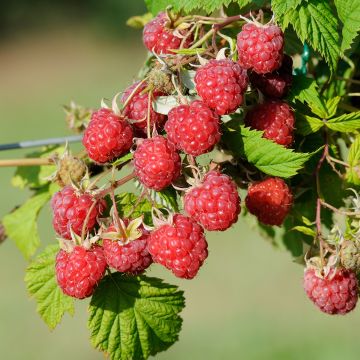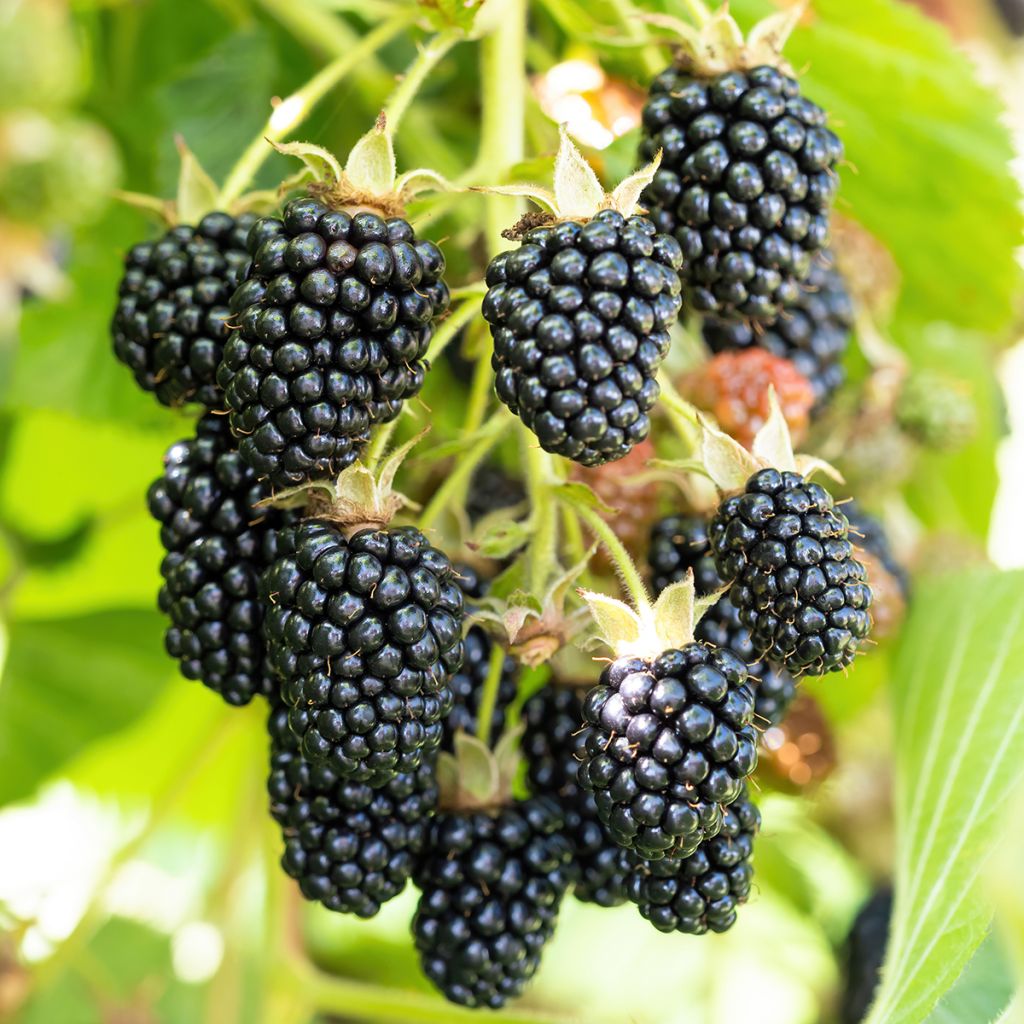

Rubus fruticosus 'Columbia Star'
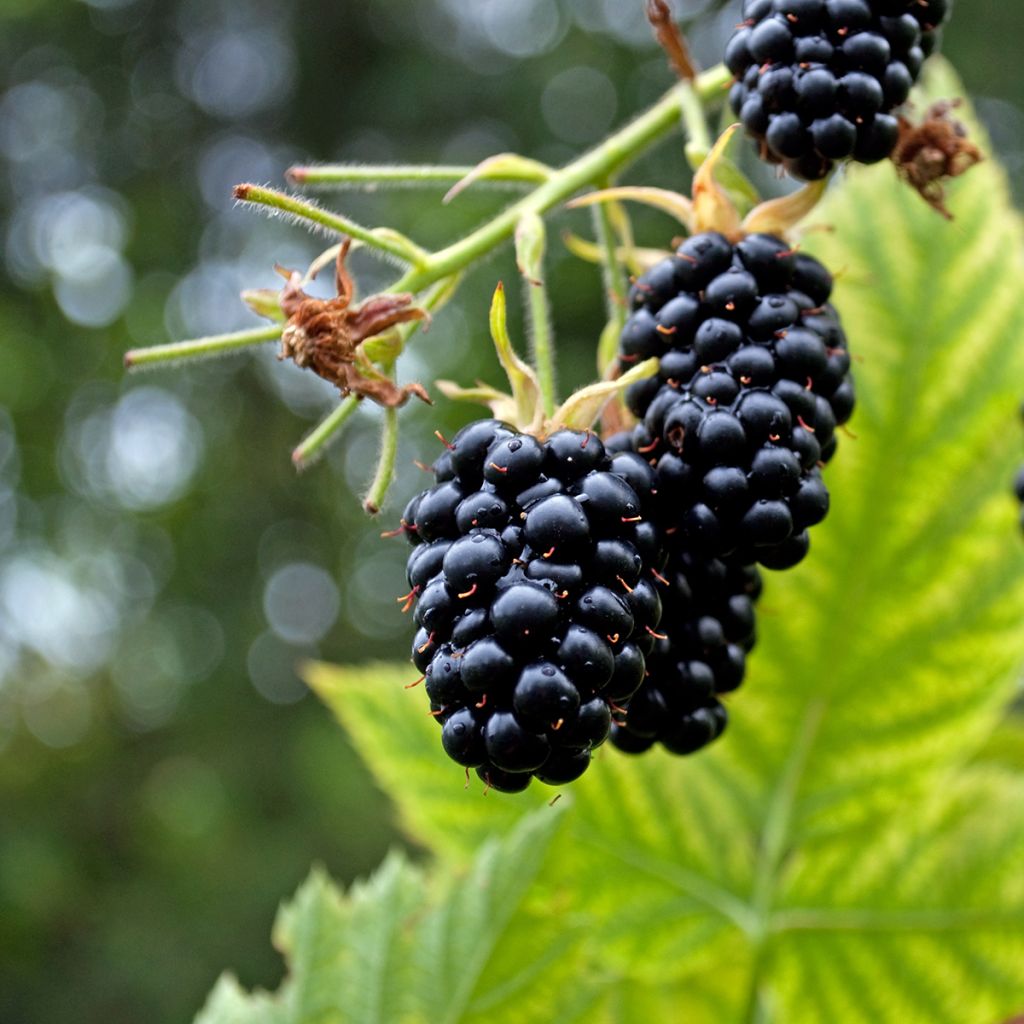

Rubus fruticosus 'Columbia Star'
Rubus fruticosus 'Columbia Star'
Rubus fruticosus Columbia Star
Blackberry, Bramble
Why not try an alternative variety in stock?
View all →This plant carries a 6 months recovery warranty
More information
We guarantee the quality of our plants for a full growing cycle, and will replace at our expense any plant that fails to recover under normal climatic and planting conditions.
From €5.90 for pickup delivery and €6.90 for home delivery
Express home delivery from €8.90.
Description
The 'Columbia Star' Blackberry, in Latin Rubus fruticosus, also known as the 'Columbia Star' Fruit Bramble, is an American variety without thorns. Its abundant black fruits are elongated, large, and all the same size. They are delicious and sweet. Very vigorous and productive, hardy, this variety produces a lot of fruit in September and October on long trailing stems that need to be trained. Plant it in ordinary soil, not too dry but moist, in full sun or partial shade.
The Rubus fruticosus 'Columbia Star' belongs to the large and important family of Rosaceae, which gives us so many ornamental species (Roses, of course, but also Photinia, Cotoneaster, Amelanchier...) as well as most of our temperate climate fruit trees (Pear, Apple, Cherry, Peach, Apricot, Plum...). The genus Rubus itself is extremely rich, counting at least a thousand worldwide. Some are ornamental, with decorative or aesthetic flowers or white shoots, like Rubus thibetanus. And others have edible value, like raspberries (Rubus idaeus) and blackberries (Rubus fruticosus).
The 'Columbia Star' variety reaches a height of 2m (7ft) in 2 years if trained and is 1.5-2m (5-7ft) wide. It is a perennial climbing plant with semi-evergreen, dark green foliage. The stems are thornless; they only live to bear fruit (2 years) and are replaced as they go by shoots from the stump. It is also necessary to prune the stems that have borne fruit in the season each year to 2 buds. The abundant and melliferous flowering comprises numerous small white flowers, 1.5 to 2cm (1in) in diameter, grouped in clusters in June and July. The fruits that grow later are formed from groups of drupes attached to the base. In September and October, they are large, red, then black when ripe. They must be picked when entirely black; they are sweet and slightly acidic and can be eaten fresh, frozen, in pies or jam.
The thornless 'Columbia Star' Blackberry is content with ordinary soil, although it prefers fertile, well-drained, moist soil. It thrives against a sunny or partially shaded wall. Plant it in a slightly wild garden, but don't forget to prune it. Add other vigorous and climbing fruit trees like the table grape vine or the kiwi.
Report an error about the product description
Rubus fruticosus 'Columbia Star' in pictures
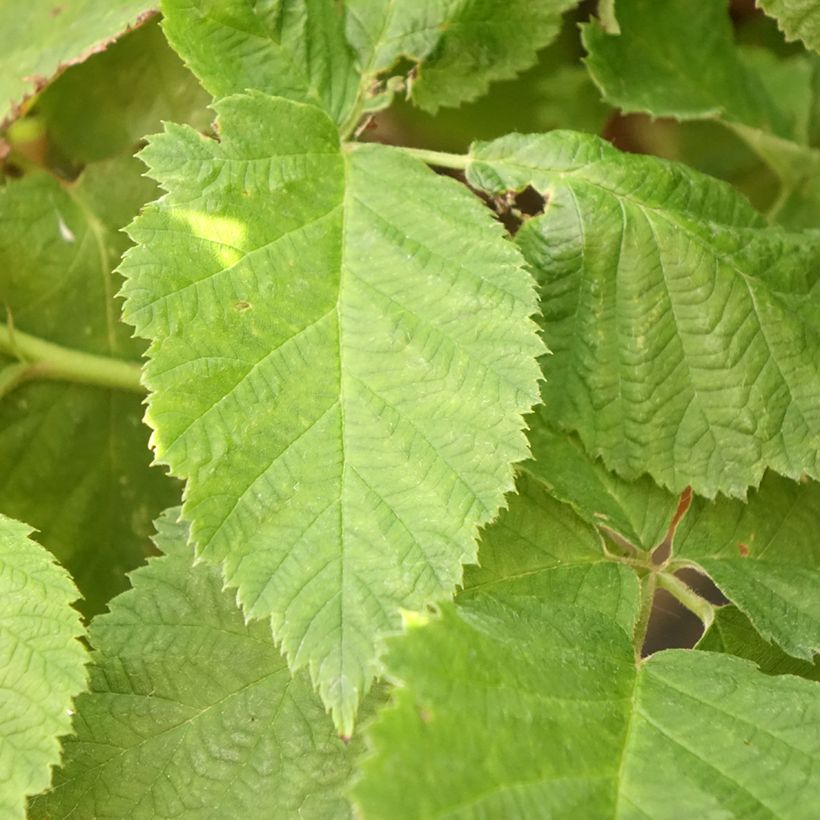



Plant habit
Fruit
Flowering
Foliage
Botanical data
Rubus
fruticosus
Columbia Star
Rosaceae
Blackberry, Bramble
Cultivar or hybrid
Other Blackberry bush
Planting and care
The 'Columbia Star' Blackberry prefers deep, fertile soils that are not too dry or too wet, but it is a low-maintenance plant that will adapt to any ordinary, not too dry soil. This bush bears fruit in the sun, in partial or even in shade, but the fruits will be of lower quality there. When grown in a pot, it can be planted at any time of the year. However, it is best to plant it in the garden in autumn, from September to November, unless you live in a very cold region in winter, in which case you should plant it in March instead. Dig a hole much larger than the root ball of the plant. Scratch the root ball with a slightly sharp tool to loosen the root mass and promote growth. Place the bush in the hole without burying it too deeply. Water thoroughly to compact the soil and remove air around the roots. Make sure the plant does not lack water in the first year after planting. Adding organic fertiliser at the start of the growing season is beneficial. Train the new shoots as they grow.
Planting period
Intended location
Care
This item has not been reviewed yet - be the first to leave a review about it.
Berries
Haven't found what you were looking for?
Hardiness is the lowest winter temperature a plant can endure without suffering serious damage or even dying. However, hardiness is affected by location (a sheltered area, such as a patio), protection (winter cover) and soil type (hardiness is improved by well-drained soil).

Photo Sharing Terms & Conditions
In order to encourage gardeners to interact and share their experiences, Promesse de fleurs offers various media enabling content to be uploaded onto its Site - in particular via the ‘Photo sharing’ module.
The User agrees to refrain from:
- Posting any content that is illegal, prejudicial, insulting, racist, inciteful to hatred, revisionist, contrary to public decency, that infringes on privacy or on the privacy rights of third parties, in particular the publicity rights of persons and goods, intellectual property rights, or the right to privacy.
- Submitting content on behalf of a third party;
- Impersonate the identity of a third party and/or publish any personal information about a third party;
In general, the User undertakes to refrain from any unethical behaviour.
All Content (in particular text, comments, files, images, photos, videos, creative works, etc.), which may be subject to property or intellectual property rights, image or other private rights, shall remain the property of the User, subject to the limited rights granted by the terms of the licence granted by Promesse de fleurs as stated below. Users are at liberty to publish or not to publish such Content on the Site, notably via the ‘Photo Sharing’ facility, and accept that this Content shall be made public and freely accessible, notably on the Internet.
Users further acknowledge, undertake to have ,and guarantee that they hold all necessary rights and permissions to publish such material on the Site, in particular with regard to the legislation in force pertaining to any privacy, property, intellectual property, image, or contractual rights, or rights of any other nature. By publishing such Content on the Site, Users acknowledge accepting full liability as publishers of the Content within the meaning of the law, and grant Promesse de fleurs, free of charge, an inclusive, worldwide licence for the said Content for the entire duration of its publication, including all reproduction, representation, up/downloading, displaying, performing, transmission, and storage rights.
Users also grant permission for their name to be linked to the Content and accept that this link may not always be made available.
By engaging in posting material, Users consent to their Content becoming automatically accessible on the Internet, in particular on other sites and/or blogs and/or web pages of the Promesse de fleurs site, including in particular social pages and the Promesse de fleurs catalogue.
Users may secure the removal of entrusted content free of charge by issuing a simple request via our contact form.
The flowering period indicated on our website applies to countries and regions located in USDA zone 8 (France, the United Kingdom, Ireland, the Netherlands, etc.)
It will vary according to where you live:
- In zones 9 to 10 (Italy, Spain, Greece, etc.), flowering will occur about 2 to 4 weeks earlier.
- In zones 6 to 7 (Germany, Poland, Slovenia, and lower mountainous regions), flowering will be delayed by 2 to 3 weeks.
- In zone 5 (Central Europe, Scandinavia), blooming will be delayed by 3 to 5 weeks.
In temperate climates, pruning of spring-flowering shrubs (forsythia, spireas, etc.) should be done just after flowering.
Pruning of summer-flowering shrubs (Indian Lilac, Perovskia, etc.) can be done in winter or spring.
In cold regions as well as with frost-sensitive plants, avoid pruning too early when severe frosts may still occur.
The planting period indicated on our website applies to countries and regions located in USDA zone 8 (France, United Kingdom, Ireland, Netherlands).
It will vary according to where you live:
- In Mediterranean zones (Marseille, Madrid, Milan, etc.), autumn and winter are the best planting periods.
- In continental zones (Strasbourg, Munich, Vienna, etc.), delay planting by 2 to 3 weeks in spring and bring it forward by 2 to 4 weeks in autumn.
- In mountainous regions (the Alps, Pyrenees, Carpathians, etc.), it is best to plant in late spring (May-June) or late summer (August-September).
The harvesting period indicated on our website applies to countries and regions in USDA zone 8 (France, England, Ireland, the Netherlands).
In colder areas (Scandinavia, Poland, Austria...) fruit and vegetable harvests are likely to be delayed by 3-4 weeks.
In warmer areas (Italy, Spain, Greece, etc.), harvesting will probably take place earlier, depending on weather conditions.
The sowing periods indicated on our website apply to countries and regions within USDA Zone 8 (France, UK, Ireland, Netherlands).
In colder areas (Scandinavia, Poland, Austria...), delay any outdoor sowing by 3-4 weeks, or sow under glass.
In warmer climes (Italy, Spain, Greece, etc.), bring outdoor sowing forward by a few weeks.

































